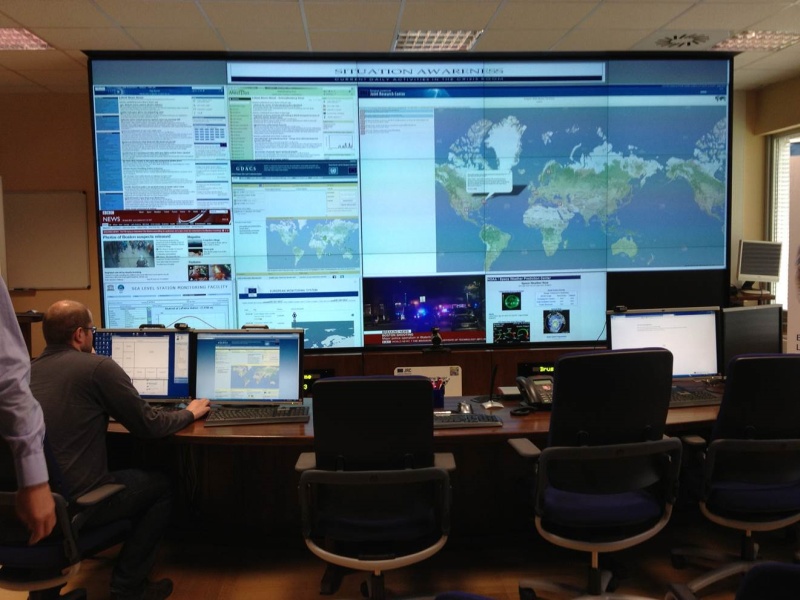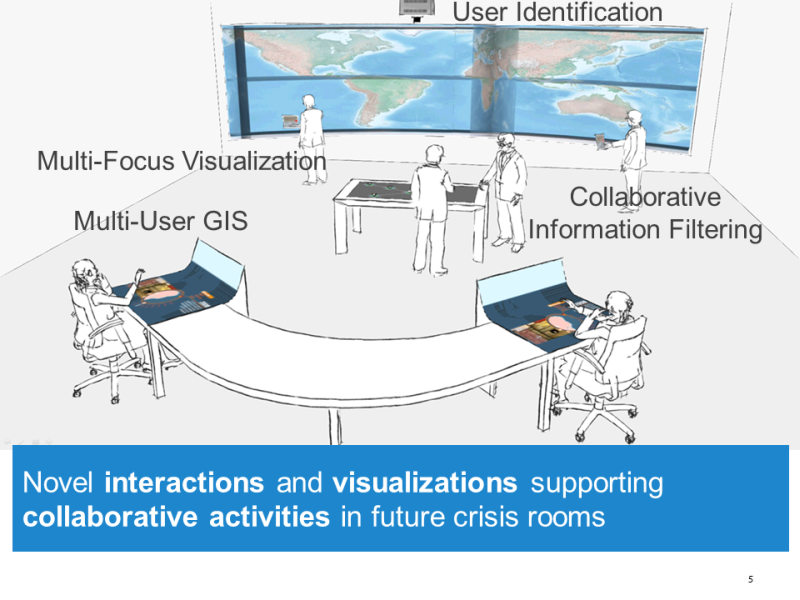ICRI Cities participates in workshop “Collaborative Human Computer Interaction with Big Wall Displays”, Ispra, Italy (Apr 18/19, 2013)
Johannes Schöning (ICRI Cities, UCL & Hasselt University) and Hans-Christian Jetter (ICRI Cities, UCL) were invited to the European Commission’s Joint Research Centre (JRC) at Ispra, Italy for attending a workshop in the European Crisis Management Laboratory of the Institute for the Protection and Security of the Citizen (http://old.gdacs.org/cr/ECMLWorkshops/BigWallHCI/JRC-ECML-BigWallHCI-Workshop-Programme_FINALv3LQ.pdf).
A view into the European Crisis Management Laboratory.
Johannes and Christian presented their vision of collaborative interactions in future crisis rooms together with Harald Reiterer and Simon Butscher from the University of Konstanz. In a joint presentation they showed how different designs and technologies from their research in the field of Human-Computer Interaction and Information Visualisation (e.g., collaborative tangible search on tabletops, folding views and lenses for collaborative geographical visualization, user identification and hand tracking using RGB and IR cameras, curved displays) can be used to enable multi-user geospatial analysis of real-time data, e.g., twitter feeds.
Different components for future crisis rooms developed by the University of Konstanz, University of Hasselt and UCL.
There was a lively exchange with the 40 workshop attendants from civil protection agencies, industry and academia about ideas and visions for future multi-user interaction with large displays in different application scenarios. For the research at ICRI Cities the event was particularly interesting to learn more about the many different data sources, sensor networks and simulation tools that are currently in use by civil protection practitioners to monitor, analyse, make sense and report about critical incidents on a global, regional or urban scale. By letting the workshop take place in the actual crisis room that is used to provide the President of the European Commission with situation reports, there was the opportunity to get a first-hand experience of typical tasks, tools and challenges. The inspiring event that was organized by Markus Rester from the Crisis Monitoring and Response Technologies (CRITECH) group at the JRC helped us to generate novel ideas about how to make data and simulations from a connected city accessible to analysts, policy makers, practitioners or city dwellers in a future “urban observatory”.



